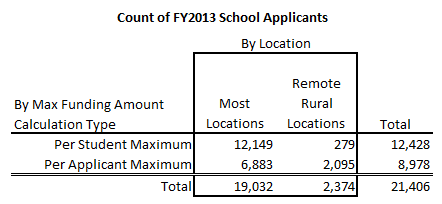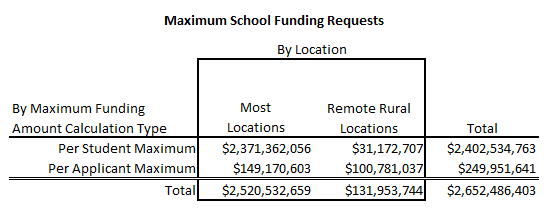All E-rate funding requests for internal connections were denied in funding year 2013. But if the FFL proposal, first presented to the FCC in 2012, had been adopted, every applicant would have had the choice to use FY2013 funding for their much needed internal connections projects.
The Funds For Learning E-rate 2.0 proposal eliminates technology-based funding caps and replaces them with maximum discounts tied to an applicant’s location, poverty level, and enrollment. See commentary. By allowing applicants to set their own priorities, E-rate dollars are focused on the goods and services that each applicant needs the most. With that in mind, let’s take a closer look at what would have happened in funding year 2013.
Rather than being denied internal connections funding in 2013, every applicant could have received discounts on any approved service or equipment, including internal connections. The maximum amount of discounts they could receive would have been calculated in one of two ways, either on a Per Student basis, or using a Per Applicant calculation designed to protect small schools.
Per Student Maximum
There were 21,406 school applicants for FY2013. The vast majority of them, 12,149 plus another 279 rural remote schools, would have used a per student calculation to arrive at their maximum discount request amount. Together, these schools could have requested up to $2,402,534,763 in E-rate discounts.
Per Applicant Maximum
For applicants with very low student enrollments, there is an alternative method to calculate their maximum discount amount. In 2013, 8,978 applicants would have used this method, with 2,095 of them coming from remote rural schools. Together, these schools could have requested up to $249,951,641.
#####
In total, $2,652,486,403 of discounts could have been requested by schools in 2013. Each applicant would have requested funds for any eligible service, and they would not have had to wait a year to find out whether or not they would receive their discounts.
The tables below summarize the results of the FFL proposal for FY2013 by school location and maximum funding type (i.e. per student or per applicant).
The details of the FFL proposal can be found in Exhibit E of the Reform Coalition NPRM comments.


A more detailed analysis of the FY2013, breaking out the count of schools and maximum funding request amounts by shared discount rates is available here.
